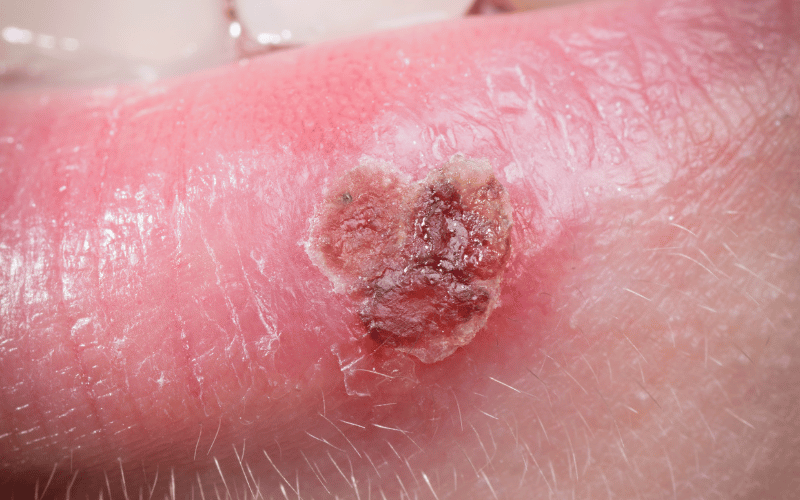Symptom 3: Oozing and Crusting

After blisters make their pronounced appearance, they transition into a phase that many find rather unsettling: the oozing. As these fluid-filled sacs reach maturity, they rupture, sometimes spontaneously, releasing a clear liquid. This is a natural part of the blister’s lifecycle, a sign that the healing process is on the horizon.
The fluid that seeps out is more than just liquid; it’s brimming with the herpes simplex virus. This oozing phase signifies a peak in contagiousness. Hence, care and hygiene become paramount. While the sight and feel of the oozing might be off-putting, it’s crucial to resist the urge to touch, squeeze, or pick at the sore, as this can exacerbate the situation.
Following the ooze, nature’s recovery mechanism kicks into gear. The liquid dries out, leading to the formation of a crust or scab over the sore. This scab is akin to a natural protective barrier, guarding the sensitive, healing skin underneath from external irritants and potential secondary infections.
The crusting phase can bring its own set of challenges. The scab can feel tight, sometimes even leading to a slight pulling sensation when making facial expressions. Keeping the area moisturized with lip balms or specialized creams can prevent the scab from cracking prematurely. It’s a phase that demands patience; after all, the scab is the final hurdle before completely healed skin. (3)